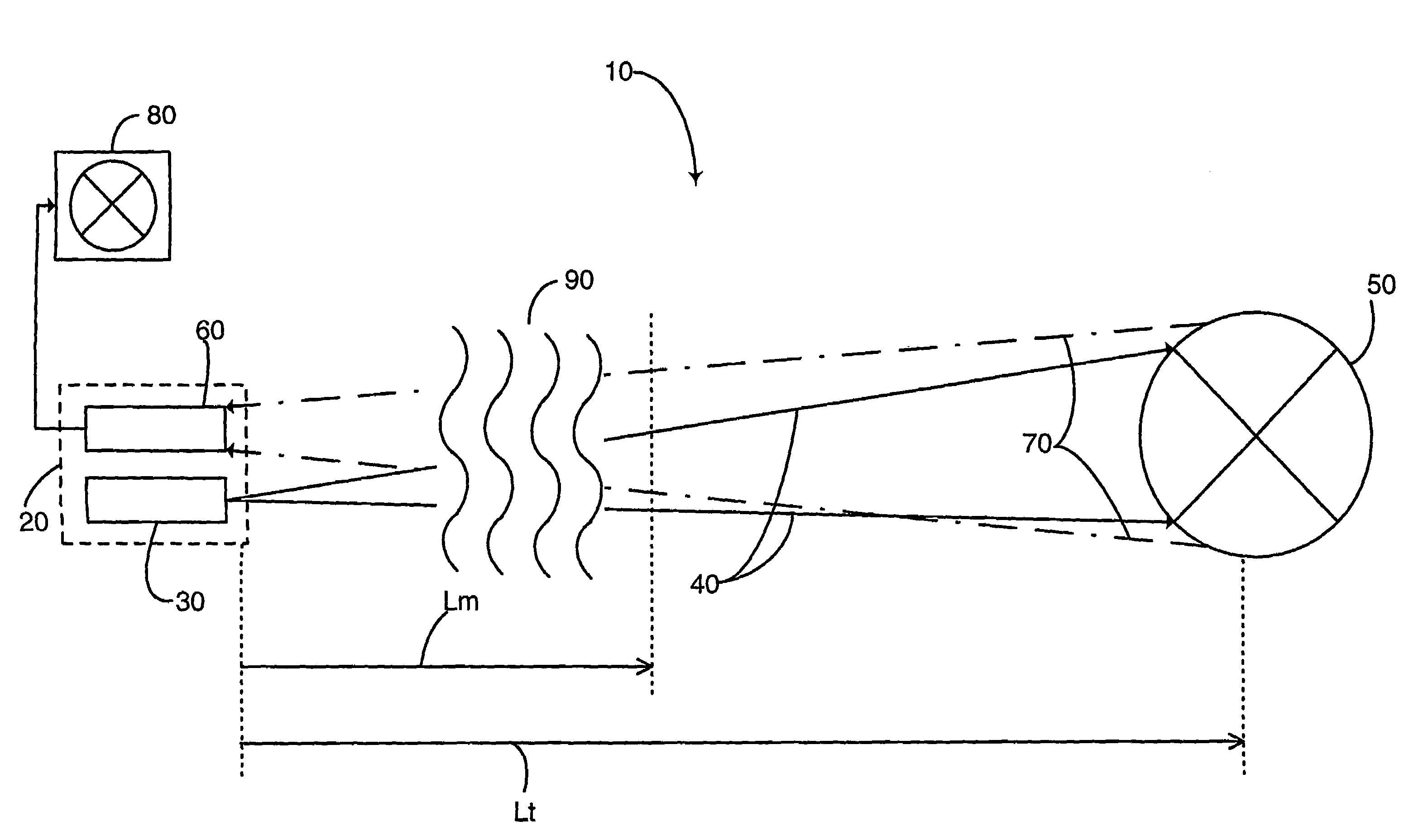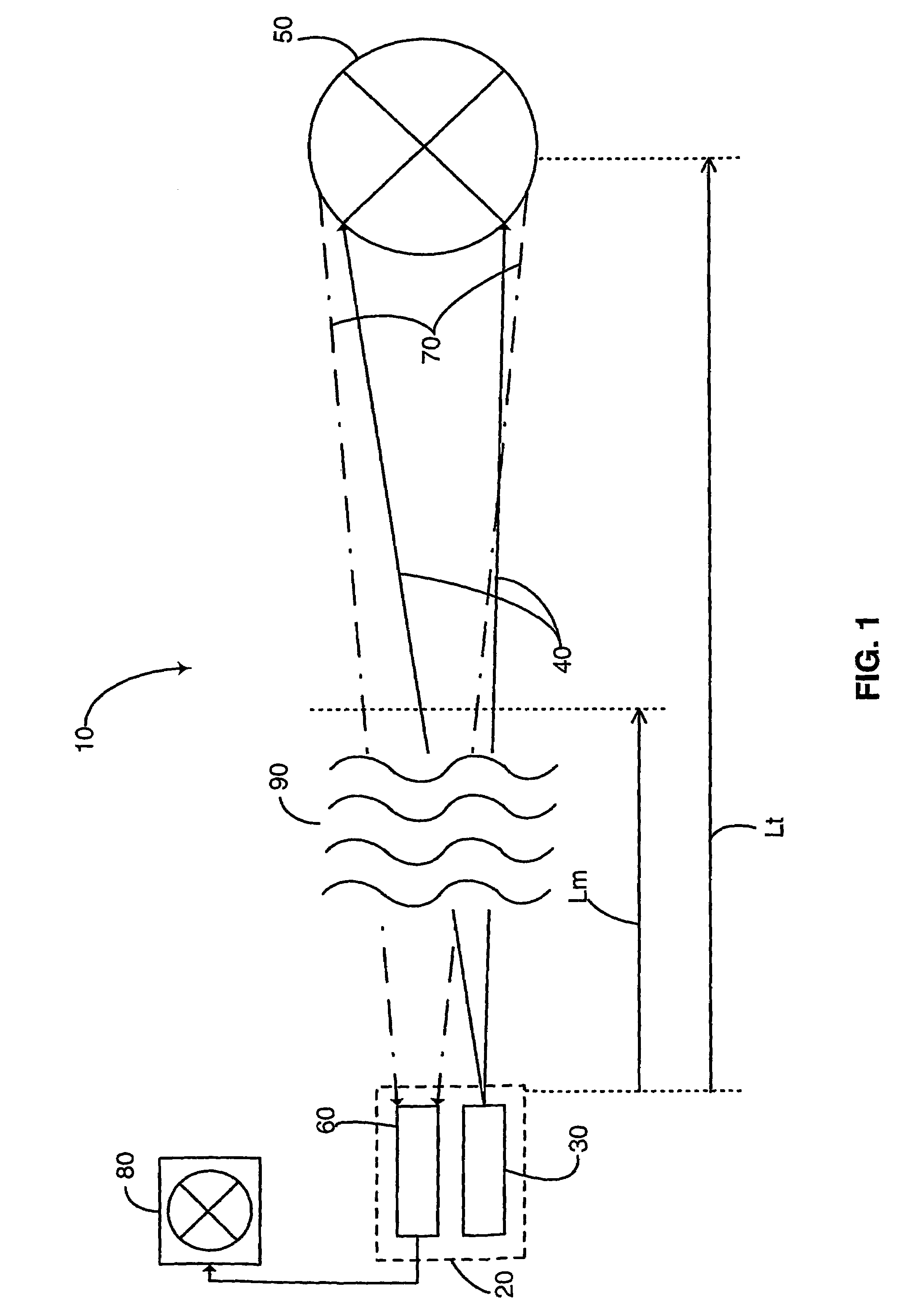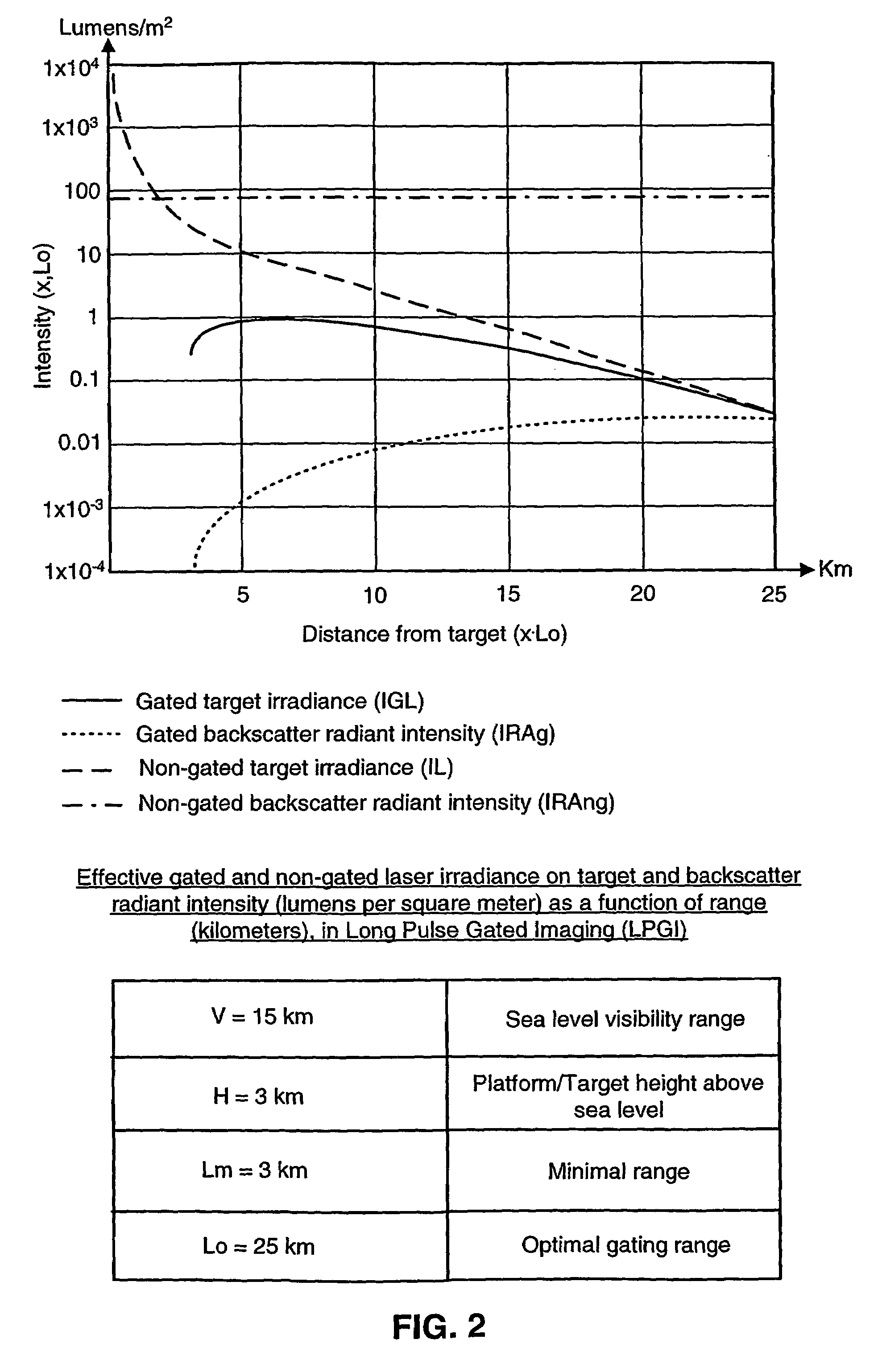Laser gated camera imaging system and method
a camera and laser gate technology, applied in surveying, distance measurement, instruments, etc., can solve the problems of insufficient natural background light intensity, limited light collection capability of long focal lenses, and inability to overcome inclement conditions
- Summary
- Abstract
- Description
- Claims
- Application Information
AI Technical Summary
Benefits of technology
Problems solved by technology
Method used
Image
Examples
embodiment 410
[0071]Optical assembly 460 includes array of objective lenses 461 that collimates laser beam 480 once more on its exit from embodiment 410, and receives returned reflexes 470 from the target that was illuminated by laser beam 480. Optical assembly 460 routes returned reflexes 470 via coupling lens assembly 462 unto camera assembly 490.
[0072]TV camera assembly 490 that processes and converts the reflexes from the illuminated target as received by optical assembly 460 into an image displayable on a TV, may include a CCD (charge coupled device) type sensor. The CCD sensor is coupled by relay lenses to a gated image intensifier, as known in the art. Alternatively, camera assembly 490 might also include a Gated Intensified Charge Injection Device (GICID), a Gated Intensified CCD (GICCD), a Gated Image Intensifier, a Gated Intensified Active Pixel Sensor (GIAPS), or any similar device.
[0073]It is noted that implementing any of the above mentioned sensor types enables advanced processing a...
embodiment 510
[0077]In embodiment 510, laser beam 531 generated by laser device 530 is also of the DLA type. The beam of pulses is propagated from laser device 530 through optical fiber 532 to narrow collimator 522, which is installed on top of observation module 525, which is supported by support unit 560. Optical assembly 550, TV camera sensor 570, and the optical fiber exit of optical fiber 532 are also packaged in observation module 525. Support unit 560 provides for height and rotational adjustments. Support unit 560 can include a tripod, support legs 561 for fine adjustments, and an integral stabilization system (not shown), including, for example, viscous shock absorbers.
[0078]In embodiment 510, filter 571 (or an array of filters), as well as optical multiplier 572 (which may comprise many components), are installed in series in front of camera sensor 570. Prior to its entry into camera sensor 570, the reflex passes though filter 571 and optical multiplier 572 which is used to enlarge the ...
PUM
 Login to View More
Login to View More Abstract
Description
Claims
Application Information
 Login to View More
Login to View More - R&D
- Intellectual Property
- Life Sciences
- Materials
- Tech Scout
- Unparalleled Data Quality
- Higher Quality Content
- 60% Fewer Hallucinations
Browse by: Latest US Patents, China's latest patents, Technical Efficacy Thesaurus, Application Domain, Technology Topic, Popular Technical Reports.
© 2025 PatSnap. All rights reserved.Legal|Privacy policy|Modern Slavery Act Transparency Statement|Sitemap|About US| Contact US: help@patsnap.com



